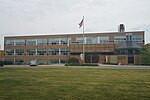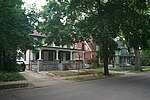Slender Man stabbing
2014 in WisconsinCrimes in WisconsinCriminal duosIncidents of violence against girlsMass media-related controversies in the United States ... and 10 more
May 2014 crimes in the United StatesMay 2014 events in the United StatesMoral panicSlender ManStabbing attacks in 2014Stabbing survivorsUse American English from May 2020Use mdy dates from February 2017Violence against womenWaukesha, Wisconsin
On May 31, 2014, in Waukesha, Wisconsin, United States, two 12-year-old girls, Anissa Weier and Morgan Geyser, lured their friend Payton Leutner into a forest and stabbed her 19 times in an attempt to appease the fictional character Slender Man. Leutner crawled to a road where she was found, and recovered after six days in the hospital. Weier and Geyser were found not guilty by mental disease or defect and committed to mental health institutions for sentences of 25 years to life and 40 years to life, respectively. After seven years, Weier was granted early release and will be under supervision until age 37.
Excerpt from the Wikipedia article Slender Man stabbing (License: CC BY-SA 3.0, Authors).Slender Man stabbing
Big Bend Road, Waukesha
Geographical coordinates (GPS) Address Nearby Places Show on map
Geographical coordinates (GPS)
| Latitude | Longitude |
|---|---|
| N 42.9814 ° | E -88.2239 ° |
Address
Big Bend Road
Big Bend Road
53187 Waukesha
Wisconsin, United States
Open on Google Maps









